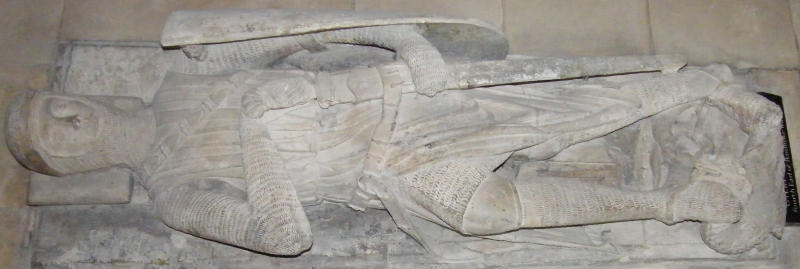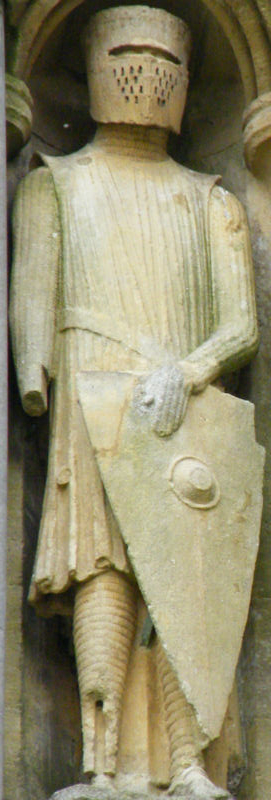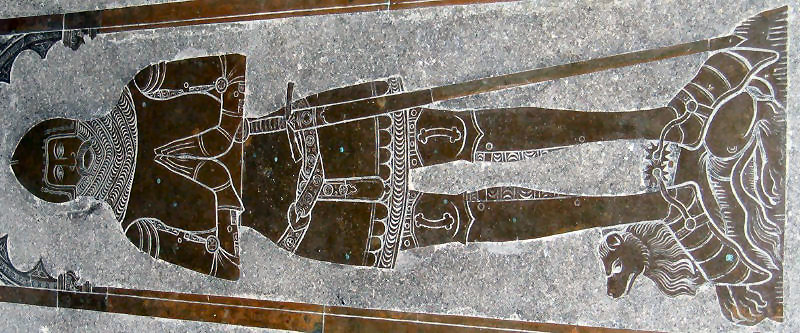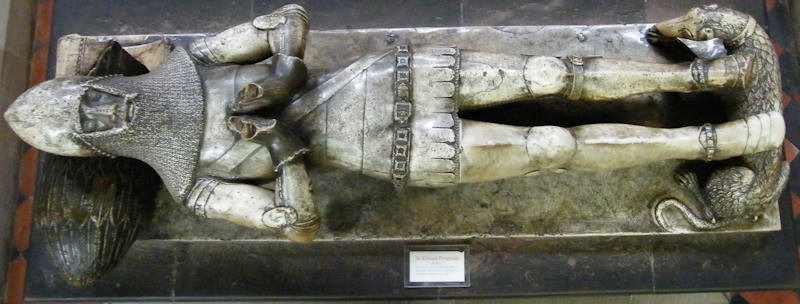“Wrapped up in battens” Birger and others like him against modern Russian historiography
(Boris Godunov. A.S. Pushkin)
Who argues that history Do you need to know your fatherland? No one! But you can know it in different ways. You can restrict yourself to a school textbook and ... the younger scooper of the cesspool truck is no longer necessary. You can read more and "School of future commanders." Very ... "advanced" for the appropriate age book. Next comes the university and there is its own specificity: domestic history is read in one semester for “techies” ... and that’s all! Humanities studies it in greater volume, but often, too ... "gallop across Europe." But worst of all, in the university, there are auxiliary historical disciplines and such a discipline as historiography. I remember well how I and my classmates studied it in the period from 1972 to 1977 a year. How did we do it? And here is how - “anyhow!” “Auxiliary” read ... a scientist, yes, but he loved to “give in”. The second discipline - his drinking companion, not at all an authoritative little man, who mumbled something under his breath, and who failed to convince us of the main thing - that only having information about who wrote what and how did write to you ! And, perhaps, I hope so, somewhere all this has been studied and studied quite differently, although the teaching experience from the 1982 of the year shows that the importance of these particular subjects is still underestimated, at least by students.

In the articles of Mr. Samsonov, the term "chained knights" is so often used that it literally "takes out the brain." Was it possible, by the way, to check this very "stiffness" of the then knights before writing about it? Yes, easily! For example, when I had such a need, I turned to the British "Medieval Society" and they provided me with photographs of ... effigy - gravestone sculptures of knights, made either immediately after their death, or several years later. But still they reflect what the sculptor saw. And they are voluminous, unlike miniatures in illuminated manuscripts of that time, and all are dated by the years of death of the deceased, whom they depict. Let's arrange a kind of “time travel”, and see how the effigies reflect the genesis of knightly “from and to” armor. Here is the first and very famous: William Longspe's effigy, mind. 1226 Propulsion Salisbury Cathedral. As you can see, he is all from head to foot in mail. And since the armor was valuable, it must be thought that the same was worn in the 1240 year. Or is it not?
Meanwhile, it is clear what sources are of paramount importance for history, because all this together is the foundation of all historical science. And - I will add, for pseudoscientific journalism. Because you can, of course, take and rewrite a couple of banal editions of the Ochakov times and the subjugations of the Crimea, and publish it, but you can regularly look at, say, an academic journal like Voprosy istorii, where not only many interesting articles are published , again with links to the most authoritative sources, but e-mails of their authors are also given, that is, you can always contact them and get answers to their questions.

Did all the knights go like that then? Yes! Here is the effect of Robert de Roos, mind. 1227 of the London Temple.
That is ... everything is there, starting from the complete collection of Russian chronicles (common abbreviation PSRL) - the fundamental book series for studying the history of ancient and medieval Russia, to the corresponding, again, journal publications and monographs. And now it was necessary for such a thing to happen that I come to my university today and bring me the next issue of Questions of History, and there an article by Ph.D., associate professor Nesterenko AN. “False narratives of the biography of Alexander Nevsky in Russian historiography”. What are good materials in the VI? By the fact that literally every fact, in fact there is a word, a reference to the source and source is given there. That is - go, good people in the library, read, compare and learn a lot. Since, as I wrote above, the sources are very important, then probably we should start with the annals. And again - there were intelligent people who did a great job, wrote an article “Written sources about the Ice Battle” (Yu.K. Runners, I.E. Kleinenberg, I.P. Shaskolsky). And it’s enough for anybody here to “drive” all into Google, as it will be provided to you. And in it, again, links to the chronicles of PSRL. So, if someone is completely Thomas the Unbeliever, he can search for everything himself, compare, compare and draw conclusions. Finally, it’s quite easy to take the file of Pravda newspaper for 1942 a year and see the editorial on April 5. Believe that it is more interesting than the articles placed here on the Neva Battle and the "Ice Battle", and even more historic at times. And you have to remember what time it was, what war was going on, and most importantly, who edited Pravda himself with a blue pencil. And ... I missed everything I wrote, and therefore I approved!

Here is the not very well-preserved effect of William de Sharpenuan of Umberlein, mind. 1240. However, what you are wearing is still visible!
So, based on the totality of the facts available in our national historiography, we can now accurately establish that the battle on the same Lake Peipsi ... was. That the Russian troops (let us say so) under the leadership of Prince Alexander defeated the army of the knights brothers. And that's it! Any details? Yes, there is in different sources! "The dead fell into the grass", "the brothers overpowered the shooters", "the Chud fell countless" and a number of others, but not so many, and again they are all in the chronicles, as well as in the Livonian rhymed chronicle, which, by the way, In his speech, the historian K. Zhukov speaks very well, as is, in fact, about the Ice Battle.

Gilbert Marshall The Fourth Earl of Pembroke, died 1241
And from this entire amount of information the conclusion follows: NO ONE IN THE LAKE HASNT SOMETHED, nobody WITHOUT WRISTLED PERSONS, quite a few warriors from both sides participated in the battle, and all reconstructions of Beskorovnogo and Razin were insinuations of the purest water, designed for simpletons. At the same time, no one disputes the fact that the very fact of the sinking of knights as a result of “breaking the ice” does not raise any doubts, only he had a place a little earlier, in the battle of Ogovzha, which, again, the chronicles tell us, and to be the only battle on the ice really took place ... in 1270, about which, by the way, I wrote in detail in my article here on BO.
Now let's talk about the “pig”, which is dear to our pseudo-historians ... Again, I don’t want to beat off the bread from K. Zhukov, he speaks about it in great detail, but here’s what A.N. Nesterenko (VI, pp. 109-10): “The Germans began the battle with a ram rat” is another common misconception. The fact that the riders' deep formation, the "pig", acts like a ram on the battlefield is nothing more than a fantasy. In fact, with such a construction in battle, only those riders who are in the front row, that is, an absolute minority, can take part. The warriors standing behind them are not only unable to assist those who are ahead, but on the contrary, interfere with maneuver and create a crush. Moreover, the deep construction of cavalry is impossible by definition, since during the attack the horse would not put pressure on the front horses, and if the horsemen try to force them, this will lead to complete chaos in the ranks of the attacking cavalry, and it will itself become easy prey for the enemy .

And this is a knight from the facade of the cathedral in Wales. Just mid-XIII, the helmet Tophel. Surcoat, helmet, shield and chain mail and ... everything!
To avoid this, the "wedge" when approaching the enemy had to turn around in a line. Only in this way the maximum number of heavily armed horsemen could simultaneously engage in battle and cause the greatest damage to the enemy, at the same time depriving him of the opportunity to strike the flanks of the attackers. Therefore, the construction of the "wedge" is only necessary for rapprochement with the enemy. With its help, the massiveness and simultaneity of the strike is achieved by the time when, approaching the minimum distance to the enemy's battle formations, the wedge turns into an attacking horse lava. If the attack of the knightly cavalry began at once with an unfolded line, instead of an organized strike, the knights would have scattered across the entire battlefield. As a result, heavily armed horsemen, chaotically and randomly moving across the field, would turn from a formidable opponent into easy prey for ordinary peasants armed with long-range bows, and would suffer defeat after defeat from the city militia who were chained up in riders' armor, bristling with long arms spears. Or they would have become the prey of light cavalry, attacking the lone rider from all sides, shooting him from afar from a distance.

Here it is - John Leverik, who died in 1350 and was buried in the church of the town of Ash, is the first effect on which we see the torso of a knight in stripes armor. His legs are also "chained" in anatomical armor.
The “wedge” had one more very important virtue: a narrow front. After all, when the squad of knights slowly, “step by step”, was approaching the enemy, it became a great target for archers. And when building a “wedge,” the target of the enemy shooters turned out to be only a few riders in the most reliable protective gear. The rest could only be hit by ineffective out-of-order outboard fire.

But the knight, more or less “chained” in armor, is John de Kabham, who died in the 1354 year and was buried in the Cobham church. True, this is not the effigy, but the breaststroke is also an element of the funeral inventory simpler - the engraving on the brass sheet. And on this brace you can see that this knight is not “chained” to the end ...
Thus, the knight's wedge, “boar's head”, was intended only for rapprochement with the enemy, and in no way for attack and certainly not for “ram attacks”. And it is clear that no infantry in the middle of the wedge could run. The knights had to pick up speed in order to quickly go to a gallop (an hour of trotting in armor was a punishment of the Templars!), And no infantryman behind a galloping horse would hijack! Lynx in the gland - for superheroes, and, as you know, does not happen!

Some effigies were colored, golden, in a word, this is a truly rare monument and an opportunity ... to look into the past. Knight Peter de Grandissan, mind. 1358 g. (Hereford Cathedral). Notice his surcoat of heraldic flowers, the “kidney dagger” on its side, which was also roughly called the “dagger with eggs”. He already has armor on his legs, and shields on his elbows, but no more!

Richard Pembridge, who died in 1375 (Hereford Cathedral), also wears armor, yes, but ... there is also a chain mail barmitsa in his gear, that is, he is not chained to the end!
However, the "pig" - it's not so bad. Some of us were so fond of knights clad in armor that Jarl Birger was also chained into them (whose participation in the Battle of the Neva, according to ANNesterenko, is not reported either in the chronicle or in the Life of Alexander Nevsky. ” !) and who, they say, our Alexander wounded with a spear, although on his skull, and he survived, there were no injuries that sculptor Oscar Nilsson testified in 2010. However, God bless him, with a skull. Let's go about the armor. And here at VO and much earlier, in the works of historian M.V. Gorelik back in 1975 year, published in the magazine "Around the World", the armor of 1240 soldiers of the year was repeatedly described. And ... they did not have any forged armor! But with persistence ... they continue to write about them. What for? In the age of the Internet, this is at least strange. But ... on this, I think, it is possible to finish this material. I do not want to deprive the readers of VO of the pleasure of self-acquaintance with the materials mentioned in the article and independent research, which, no doubt, will increase their competence at times!
Well, as for the photo excursion in the history of armor given here, it should be quite enough! No wonder it says: better to see, is not it? Well, and someone else said that it is necessary to move towards the goal gradually, “step by step”. Most likely, few of those who read all this will find the strength to turn to the above-mentioned sources and, in particular, to the journal Voprosy istorii, after all an academic publication. But at least with the knights, we figured out, is not it? And when we next time, well, let's say, in a year or two, we will again read about the Battle of Neva and the "Ice Battle" again, we can hope that, at least, the knights in armor in these future materials will not be!

And finally, the fully knitted armor - Nicholas de Longford, mind. 1416 (Longford Church). We note the presence of a very original laguage - scutes covering the armpits on its armor. Basagu were usually round. And these look like shells. Such was the original! And now let's calculate: with the 1240 year has passed ... 176 years!
Information